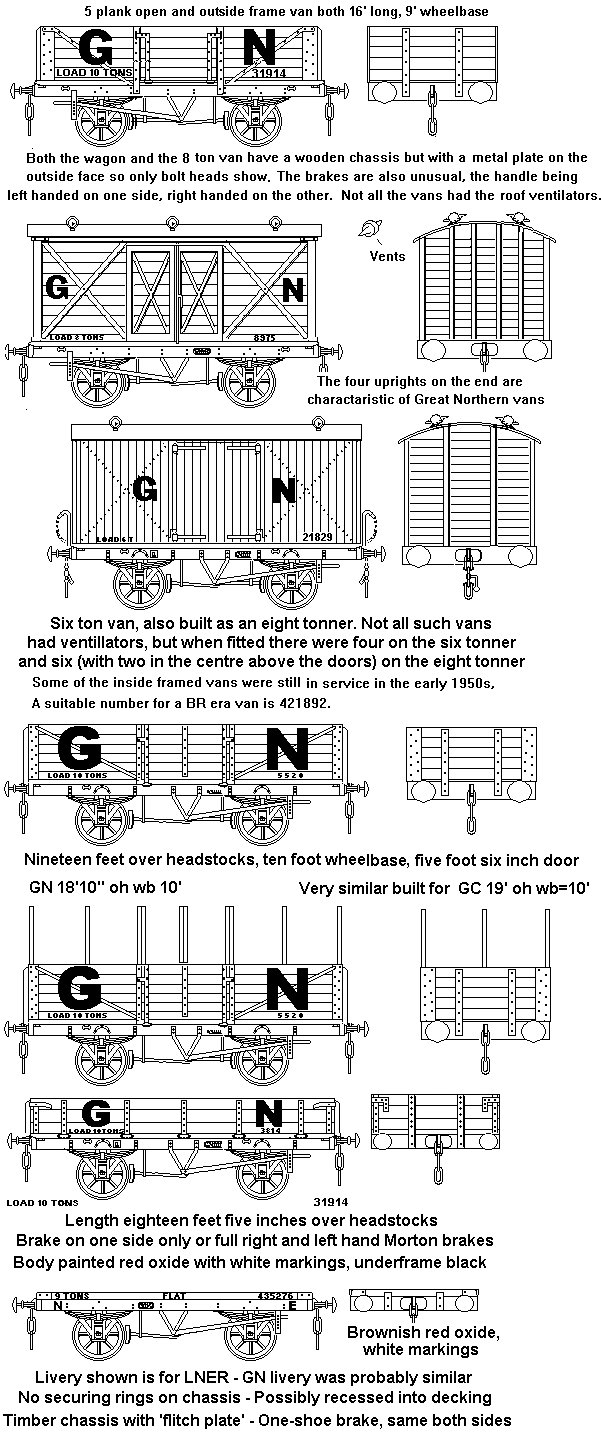
Great Northern Railway
(Note: Numbers in brackets refer to specific references)
The Great Northern Railway was established in the 1840's was intended to provide a fast link between London and York (reached in 1852). The company eventually operated an major east coast route between London Kings Cross station & Doncaster with links to all the major towns in the west of Yorkshire as well as several lines in Norfolk & East Anglia. It was a major partner in the Cheshire Lines Committee and its multi-storey GNR freight depot in central Manchester is still standing, the lines entered the building on the third floor via a viaduct. In 1859 the GNR and the Midland Railway purchased a line to the Norfolk coast which then became the 'Midland & Great Northern Joint Railway'. The GNR operated a great many express passenger services whilst the demand for Yorkshire coal in London provided the main freight revenues, including traffic on a line jointly built with the Great Eastern from Doncaster. The GN pioneered fully-fitted high speed goods services.
Goods vehicles were painted reddish brown with black underframes and white lettering, initials used were G N. Refrigerator vans, meat vans and gunpowder vans were painted white, the first two had black lettering the gunpowder vans used red lettering. The Graham Farish fish van simply needs the N and E replacing with G and N to back date the vehicle. The Great Northern Railway goods warehouse in Manchester is still in existence, it can be seen from the 'tram' platform serving the Manchester Science Museum at Deansgate.
Passenger livery was varnished teak similar to the Graham Farish LNER coaches. Some non passenger coaching stock was also in teak but this stock had large GN on the sides in yellow as shown on the sketch of the six wheeled milk van. The horsebox body painted dark brown with gold lettering.
Fig ___ GNR

The five plank wagon body is a cut down Peco seven plank kit and it is mounted on a Peco ten foot wheelbase chassis, which I think is too long.
The six plank open wagon is almost nineteen feet long and has a ten foot wheelbase, my model is based on a drawing by Ken Werret in the February 1977 Railway Modeller. I used a Peco seven plank wagon for the ends, adding new sides from 1mm scribed card and lenghened the Peco wooden chassis by cutting a V shape from each end to clear the coupling and adding strips of 40x40 thou. The resulting model is about 1mm too short I believe but looks the part.
The wagon with slats above the body was built for vegetable traffic, the body should be as above but I used a standard Peco wagon kit for my model as it was in my own 'Light Railway' livery. The supports on my model are staples cut in half and glued inside with Superglue, strips of 20x20 thou were glued to these for the rails.
The three plank drop-side wagon is again a cut down Peco wagon body mounted on a standard Peco ten foot wheelbase chassis, this should be the same length as the six plank wagons but I did not have a good drawing when the model was made.
References:
(1) A Pictorial Record of LNER Wagons by Peter Tatlow - OPC - 1976 - ISBN 0 92888 92 7 Contains quite a few photographs GNR wagons.
Societies:
Sadly the former Great Northern Railway Society website is currently inoperative
Available Models
Graham Hughes Kits 20, MacKelvie Road, Lamlash, Isle of Arran Strathclyde KA27 8NP
Mr. Hughes offers white metal kits of the GNR twenty ton loco coal and nine ton four plank open wagons,